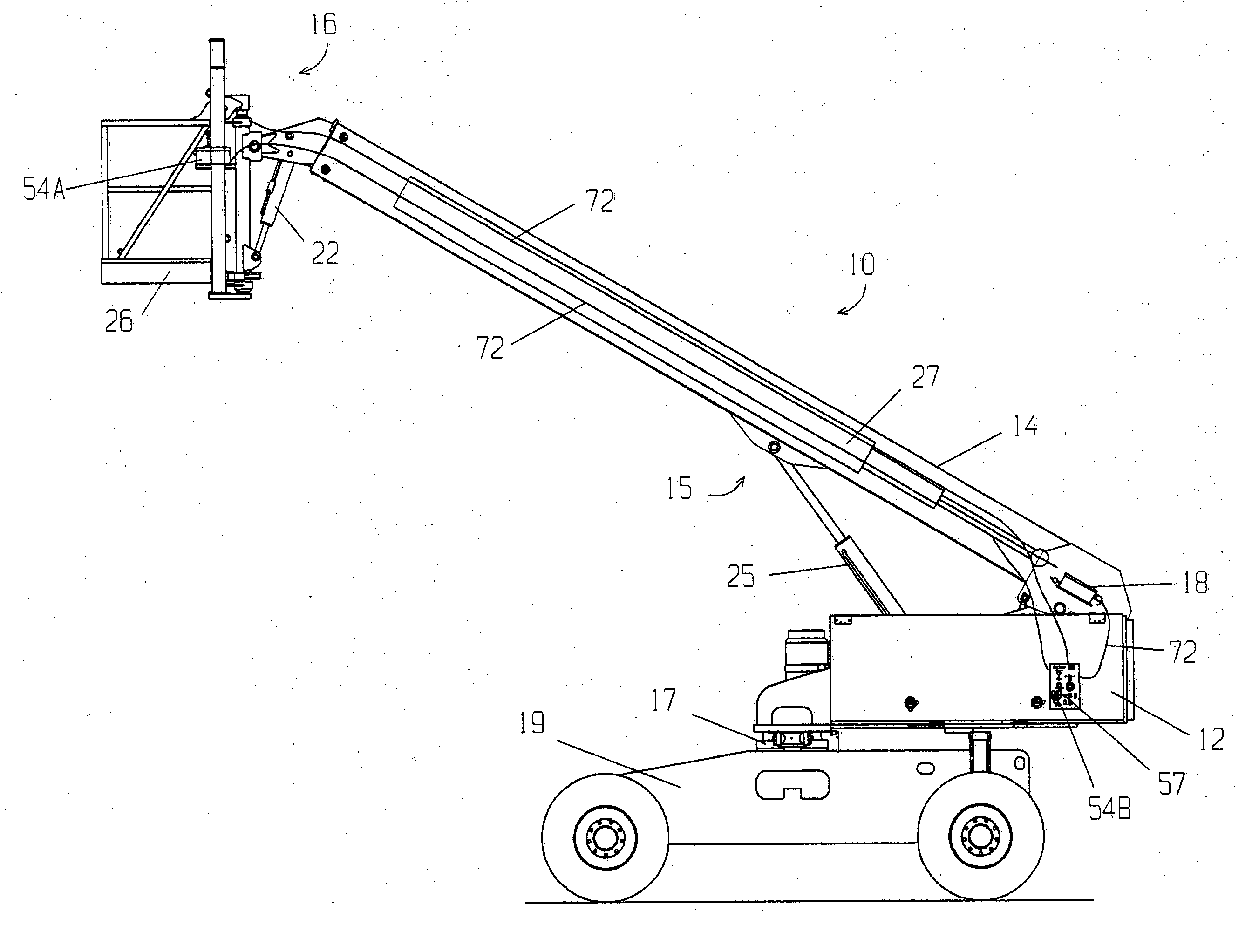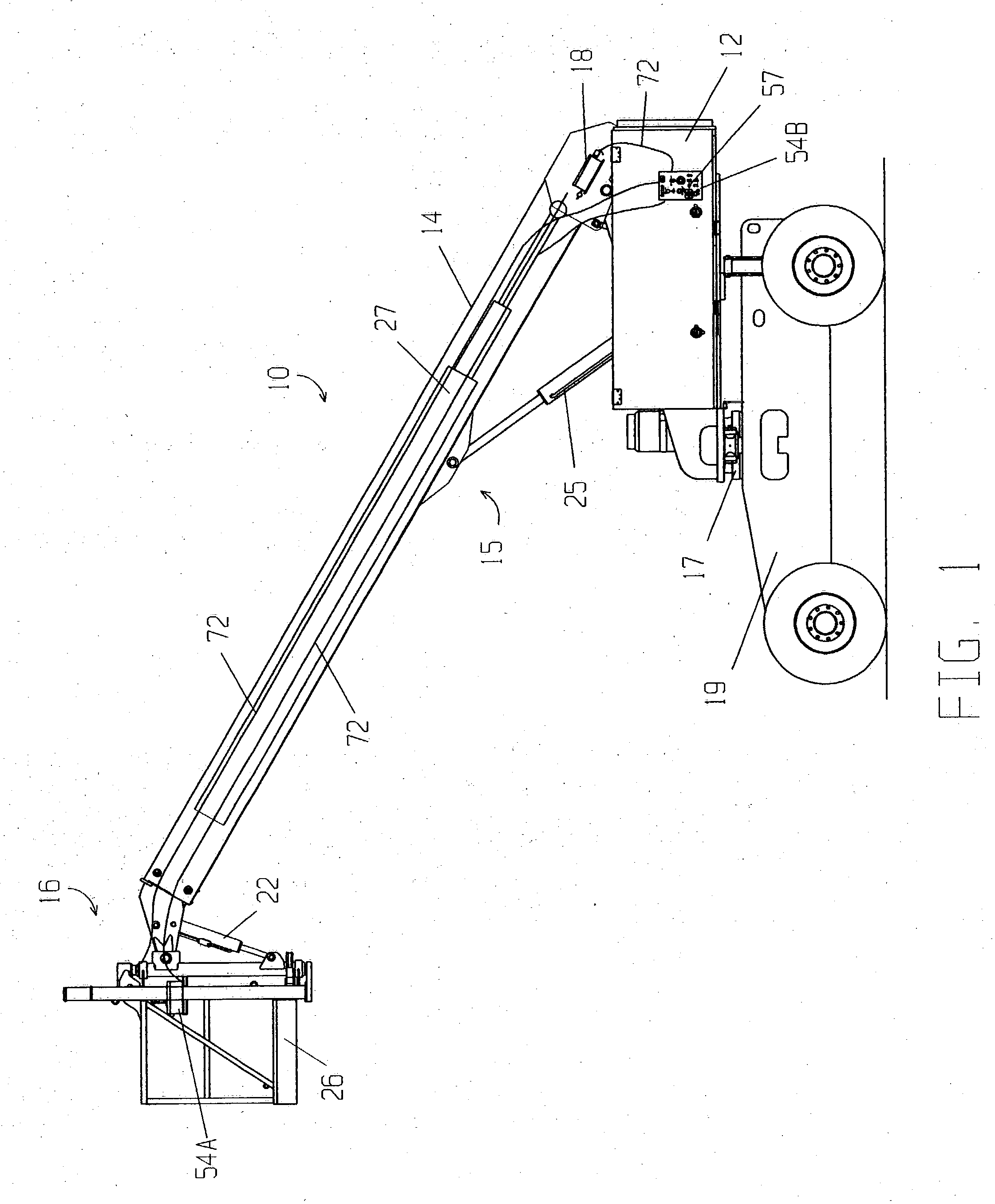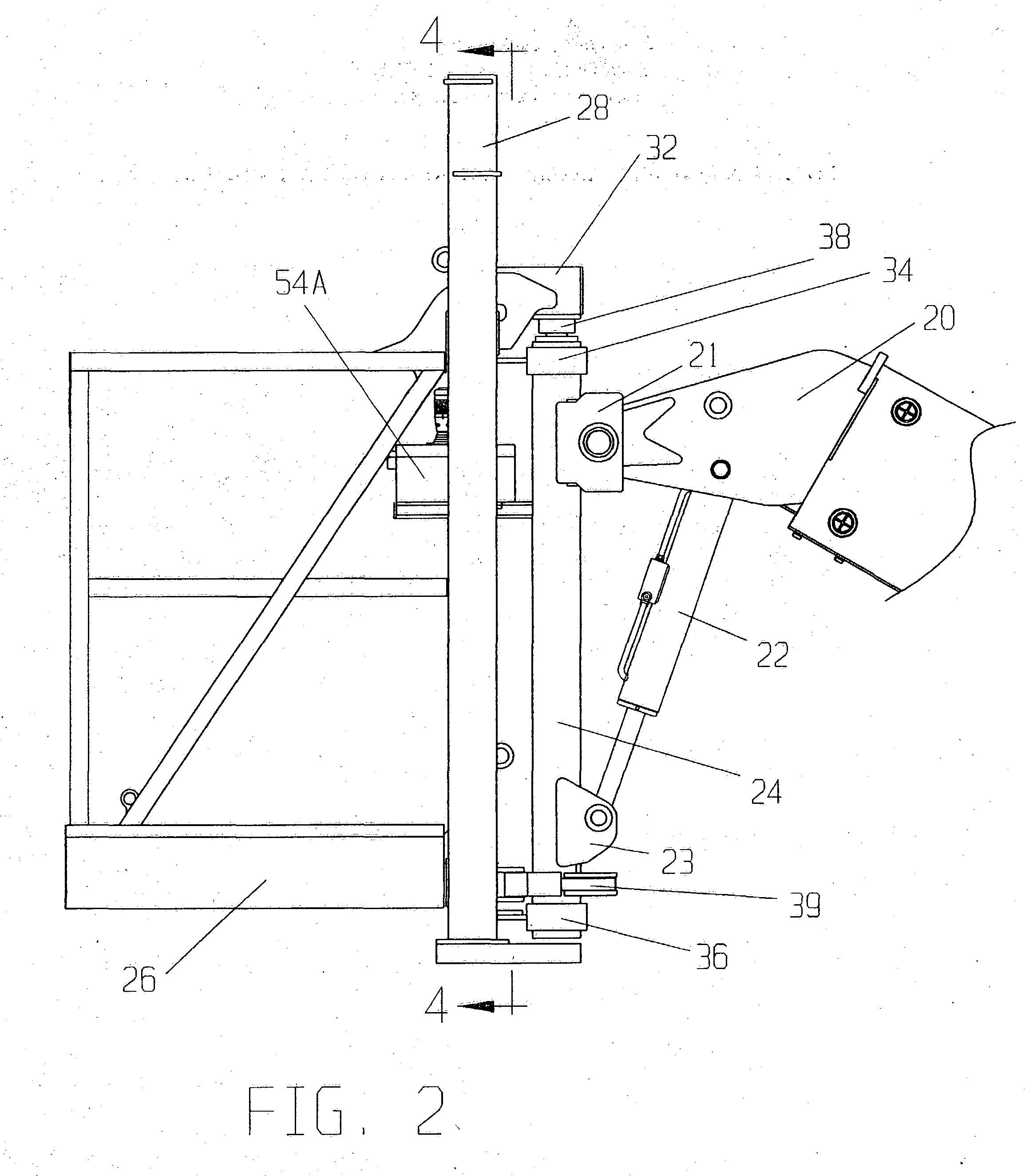Load-sensing mechanism for aerial work apparatus
- Summary
- Abstract
- Description
- Claims
- Application Information
AI Technical Summary
Benefits of technology
Problems solved by technology
Method used
Image
Examples
Embodiment Construction
[0034] The drawings illustrate an improved aerial work apparatus 10 in accordance with this invention. As seen in FIG. 1, aerial work apparatus 10 is comprised of a base 12, a boom 14 securely mounted to base 12, and a platform 16 pivotably attached to the outer or distal end of boom 14.
[0035] Boom 14 is capable of three-dimensional movement in a fashion known to those skilled in the art. Boom 14 can rotate 360.degree. in either direction in a horizontal plane through the associated rotation of base 12 about base pivot 17. Base pivot 17 is either mounted on the bed of a trailer (not shown) when base 12 is vehicle-mounted or mounted on wheel platform 19 when base 12 is self-propelled as shown in FIG. 1.
[0036] Boom 14 can also be selectively raised and lowered to a position measured by the angle formed by boom 14 with a plane parallel to the ground by means of hydraulic boom lift cylinder 25. Furthermore, boom 14 can be telescopically extended or retracted axially by means of hydrauli...
PUM
 Login to View More
Login to View More Abstract
Description
Claims
Application Information
 Login to View More
Login to View More - R&D
- Intellectual Property
- Life Sciences
- Materials
- Tech Scout
- Unparalleled Data Quality
- Higher Quality Content
- 60% Fewer Hallucinations
Browse by: Latest US Patents, China's latest patents, Technical Efficacy Thesaurus, Application Domain, Technology Topic, Popular Technical Reports.
© 2025 PatSnap. All rights reserved.Legal|Privacy policy|Modern Slavery Act Transparency Statement|Sitemap|About US| Contact US: help@patsnap.com



